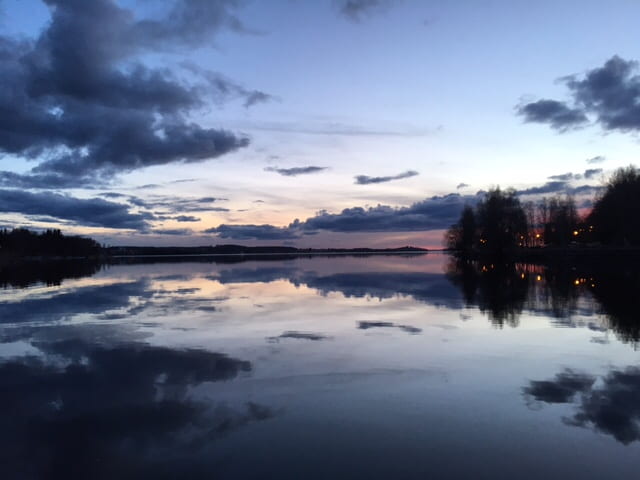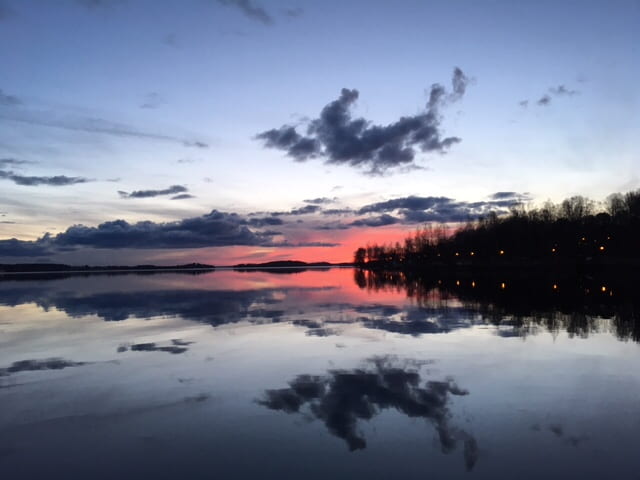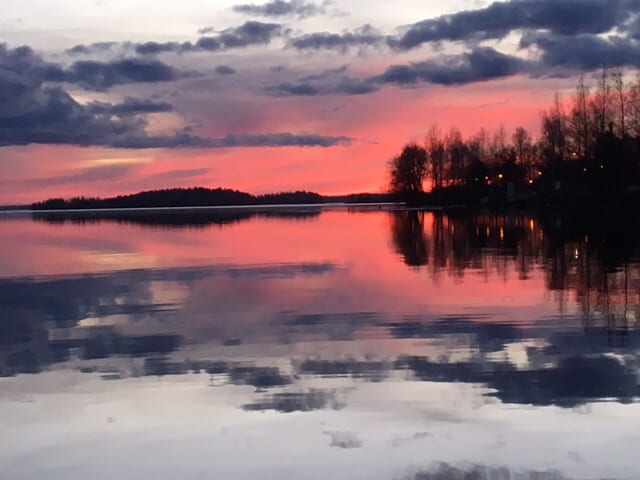By guest contributor Dr. Dina Gusejnova
The introduction to “The state, and revolution” can be found here.
Museums and libraries are the kinds of places that promise to transport you to any other time or place. But some people experience their structure as a constraint on their imagination. One reaction to their static and state-centered character might be to give up on the structure of museums altogether and resort to watching films instead. It is not surprising that this medium was most successful in marking the first decade after the October Revolution—celebrating it as a leaderless movement, without an obvious protagonist and certainly no national teleology. In fact, most of today’s museums have embedded films in their displays. Yet if you want to resist path-dependent constraints in interpreting revolutions, films are hardly a solution: they are the products of fixed scripts, of a specially built set, narrative music, and so on. (October was first performed to the sound of the Marseillaise, before new tunes could be composed).
Is a museum of the revolution necessarily an oxymoron? As a type of space, most museums have the advantage of being physical sites. In such places, visitors can recognize what they thought of as ownership of the present as a mere tenancy, which places them not only in a subordinate relationship to the landlord, but also in an imaginary relationship to the previous tenants, who may even have left things behind. From then on, it is up to them how many degrees of separation they establish between themselves and this past.
The Russian Revolution exhibition at the British Library—its interior designed in the style of a grand opera set — is one example of this kind of possibility. The Communist Manifesto is placed at the entrance as a relic of one of the Library’s most famous users, yet it is as feeble a guide to the Russian Revolution as Rousseau had been to the French. If anything, the curators emphasise, the Manifesto discouraged the Communists of its time from transporting ideas of revolution to unsuitable locations like Russia. Like the gimmicky poster of a Bolshevik, it functions merely as a hook, because what you find instead of a party line is an aspect of the revolution as the product of a social process of intellectual contagion. Connoisseurs of magical realism will appreciate this opportunity to trace how the revolution as an idea “became” an event in and through the library itself. What sorts of studies in the library collections led Lenin, who, between 1902 and 1911 identified himself to the library as Jacob Richter, supposedly a German subject of the Russian empire, to call for a revolution in Russia six years later under the more ubiquitous pseudonym of Lenin? For Marx, contemplation itself had been a kind of action, since he preferred a Victorian library to the barricades of Paris. But where did Marx’s theories of how to “change the world” connect to the Bolshevik practices of terror and violence? The exhibition hints at the unlikely friendship between the Victorian library curator Richard Garnett, Dostoyevsky’s first English translator, Constance Garnett (his daughter-in-law), and the exiled Popular Will activist Sergei Stepnyak. Without connections like this, would Lenin have found sufficient reading material on “the land question”?
Finally, how did readers decide where to change the world? Ideas did not just migrate from book to book in a Republic of Letters, nor were they confined to their author’s “home” states. In a postwar world governed by new frontiers, visas, and immigration detention centres, it was the librarians who mattered. In the twentieth century, you are more likely to find a folio edition of counter-revolutionary thoughts than a revolutionary manifesto, but the exiled socialists made sure that ephemeral pamphlets also got collected. Lenin’s wife, Nadezhda Krupskaya, had been a librarian in St Petersburg before the 1905 revolution, working together with Nikolai Roubakine, who is introduced in this exhibition only as a social statistician of the late Russian empire. As an exiled revolutionary of 1905, Roubakine had started a new library in Switzerland, which also supplied Lenin with reading material during this time of his exile.
Instead of a state withering away, the visitor is confronted with the notion of a civil war that is only “Russian” in inverted commas. The protracted statelessness of the “white émigré” exiles in the West coexisted alongside a Bolshevik-run Soviet apparatus in the East, which was eventually signed out of existence in a Byelorussian forest with the Belavezha agreement of 1991, as Katie McElvaney reminds us in her timeline. At the end of the magic, there is also the reality of censorship. Apparently, in 1922, a British library consultant concluded that some materials calling for revolution beyond Russia were not “desirable to be released to readers.” We may not know if the Library caused this or any other revolution, but we can certainly see that it had tried not to cause it.
To get away from issues of representation to the memory of revolutionary action, however, I had to travel further, to Finland, where, in March 2017, Tampere University had organized a conference called “Reform and Revolution in Europe, 1917-1919.” Like many attendees, I was struck by the range of new insights into the Revolution that Russia’s former periphery offers, through the transnational perspective of the First World War in the work of Richard Bessel, and the concept of civil war as contextualized by Bill Kissane. Formerly an underdeveloped outpost of the Russian Empire, Finland had risen to the status of an autonomous Grand Duchy by the time of the Revolution. As such, it was the first post-imperial polity to gain sovereignty from the Russian empire, by Lenin’s decree—and to keep it, for the most part.
In the summer of 1917, Lenin was in Tampere as he worked on The State and Revolution. Eleven years before that, he had his first fateful encounter with Stalin here. The site of their encounter, a former Workers Hall, is the space for a newly redesigned Lenin Museum, which first opened here in 1946, under the close watch of Soviet authorities—one of the more visible effects of what is now called “Finlandization.” Its new curators have resorted to a combination between history and humor to tell the story:
[wpvideo N1LM8392]
Reproduced with kind permission from the Lenin Museum, https://museot.fi/en.php
The rest of the Lenin Museum has little to do with Lenin, and more to do with the history of Finnish democracy and the vicissitudes of European integration, after decades of civil war, partial Soviet occupation, and collaboration with National Socialism, before the gradual emergence of a Finnish brand of Social Democracy.
Seeing the city itself, surrounded by its stunning landscape, also offers other opportunities to reflect on how ideas might relate to the places in which they are formulated. How could this ethereally calming landscape inspire someone to work on a book called The State and Revolution? Could Lenin have instead become a twentieth-century Lake Poet?

Photo by Dina Gusejnova

Photo by Dina Gusejnova

Photo by Dina Gusejnova
As I walked through a working-class neighborhood of today’s Tampere, I noticed that its outer lake was still frozen, so I borrowed some skates to have a final look at the skyline: two days, two seasons. Lenin, of course, had missed the Finnish ice-skating season, with the revolution gaining speed in Petrograd just as the ice had begun to thicken. I thought about the remarkable contrast between the long-term outcomes of the revolution for Finland and for Ukraine—another imperial province, but with a much shorter history of post-imperial sovereignty, and an incomparably higher death toll in the twentieth century. This is a complex issue for historians, and one which, perhaps, will always call for the assistance of a writer like Vassily Grossman.
[wpvideo v0SWyWTj]
In the Labor Museum, a three-year long exhibition (2014–17) marks the cultural memory of the revolution of 1917 from the perspective of the Finnish Civil War of 1918, which the exhibition laconically identifies to its visitors as “a short, but traumatic and sorrowful period.” This exhibition is a unique, if slightly quixotic, place. The visitor will look in vain for any kind of partisanship here, with the Reds or the Whites, the Russians or the Finns, workers, peasants, or bystanders. What they see is a memorial to civil violence, a focus on human experience. It is challenging to try to capture a war inside the walls of a museum, but Tampere has clearly learned from commemorative practice in France and other countries, with their focus on reconciliation. The site of the museum belongs to one of the largest cotton weaving halls in the Nordic countries, Finlayson & Compagnie, a focus of socialist mobilization in 1917. The last Finnish factories were closed in 1995, but the company continues selling its products in Europe. Founded by the Scottish industrialist James Finlayson, it is also a reminder that a civil war always has not just local and imperial, but also trans-imperial dimensions. At the museum, I met social historian Richard Bessel, a first-time visitor to the city, and social theorist Rebecca Boden, who has recently moved there.
[wpvideo glvKTPFH]
Rebecca Boden is a professor of critical management. She is interested in the effects of regimes of accounting and management on sites of knowledge creation, and the relationship between individuals and the state. She recently joined the University of Tampere as the Director of Research of the New Social Research Centre. Professor Boden also attended the conference “Reform and Revolution in Europe, 1917-1919,” held at the University of Tampere in March 2017.
I’ve never lived in this part of the world, and as a British person, I know very little about it. So what strikes me is how little people brought up and educated in Britain know about Central and Eastern Europe. I’ve felt ashamed about some of the questions I’ve had to ask about the Finnish Civil War, in terms of understanding this part of the world. And I suspect, during my upbringing, it was during the Cold War and the Iron Curtain, so Central and Eastern Europe as very much an unknown quantity to people in the West.
What’s interesting to me is, in Britain, you’ve got a reversal of trends in history. There is greater and greater interest in British history, especially British imperial history, and that becomes dangerously xenophobic, and insular, and parochial. And I think the thing for Finland is—and I can say this as an outsider, they never would, because they are quite humble, quiet, understated sort of people generally—Finland has so many interesting things about it, it is such an interesting geopolitical space, it achieved so much so well, that I am urging people to get to know the Finnish story quite urgently.
A lot of the quiet places—very far from anywhere, on the periphery, small population, very thinly spread—they have to move themselves to make themselves heard. All the isomorphic tendencies, policies and practices and cultures tend to move in the other direction. And it would be quite good to have the quiet places listened to. But part of it is, the quiet places have to find their voice. And that’s partly what I am doing, helping Finland to find their voice and engage with the outside world in a really proactive kind of way.
Richard Bessel is professor of twentieth-century history at the University of York. He works on the social and political history of modern Germany, the aftermath of the two World Wars, and the history of policing, and is currently co-editing, with Dorothee Wierling, Inside World War One? The First World War and its Witnesses (Oxford University Press, 2018). In March 2017, he travelled to Finland to attend the conference on “Reform and Revolution in Europe, 1917-1919,” at which he delivered a keynote lecture.
I’ve never been to Finland, and it’s just a really interesting place to come to. And I thought it would be an interesting intellectual challenge to try to think about revolution and its relationship to the First World War, if not globally, certainly focusing more on Eastern Europe rather than on Western Europe.
I am finding Tampere very interesting, and … this is my first time in Finland! To be in a city which, as we see here, had such a fundamentally different history, with violence right in the middle of it. The differences, I just hadn’t thought about the differences to that extent. What in many ways looks and feels similar to Sweden, but then you scratch the surface, and you realize it’s not. And that surprised me, I hadn’t really quite expected that.
As I get older, it becomes more important both to me and also to colleagues: we talk about our families a lot. When I was younger, I wouldn’t do that professionally. When I was younger, we wrote history in the third person, and now we use the first person.
I’ve just been working through a book, an edited collection on ego-documents of the First World War, with a colleague of mine, which is also very much about the East and the South.
There is one question that I always wanted to get it on an exam, but nobody would allow me to do it. And the question is: when did the twentieth century begin?
Dina Gusejnova is Lecturer in Modern History at the University of Sheffield. She is the author of European Elites and Ideas of Empire, 1917-57 (Cambridge University Press, 2016) and the editor of Cosmopolitanism in Conflict: Imperial Encounters from the Seven Years’ War to the Cold War (Palgrave Macmillan, forthcoming later in 2017).



1 Pingback